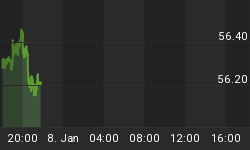Wall Street stocks and most financial markets have simply shrugged off news that inflation levels have accelerated to the fastest pace in more than decade. On Thursday morning, the U.S. Labor Department revealed that headline consumer prices, also known as the Consumer Price Index or CPI, rose 5% year-over-year in May, higher than Wall Street expectations and the fastest pace on record since August 2008.
The CPI, a gauge that represents a basket including food, energy, groceries, housing costs and sales across a spectrum of goods, climbed at a faster clip than Wall Street’s consensus of 4.7%, marking the biggest CPI gain since August 2008 when it clocked in at sweltering 5.3% just before the financial crisis hit and sent the economy into a major depression.
Used cars and truck prices climbed 7.3% on the month and 29.7% for the past 12 months while the new vehicles index increased 1.6% month-on-month and 3.3% for the 12-month period, the fastest clip in a decade.
However, the energy index remained flat for the month despite the huge runup in gasoline prices this year. The gasoline index is up 56.2% over the past 12 months, and has contributed to an overall 28.5% increase in energy during the period.
Food prices have remained comparatively tame, up 2.2% over the past year.
Meanwhile, another report released on the same day shows that jobless claims for the week ended June 5 came in at 376,000, higher than the Wall Street consensus of 370,000 but still among the lowest readings of the pandemic era.
Despite the inflation readings being well above anything seen in more than a decade, the Federal Reserve has largely dismissed them saying the current rise is due to temporary factors that will dissipate as the months roll on, including having easy comps because of comparisons to the year-ago period, when much of the economic activity remained restricted.
The financial markets appear to concur.
Stocks on Wall Street hit fresh highs while core government debt remained steady as investors brushed aside the inflation report.
The broad market’s favorite benchmark, the S&P 500 Index (SPX), was up half a percentage point to a new all-time high of 4,239 points. The index is now up 12.9% since the beginning of the year. The healthcare sector was among the best performers on the day with the Health Care Select Sector SPDR Fund (XLV) up 1.70% while the retail sector was among the notable laggards with the SPDR S&P Retail ETF (XRT) slipping 1.14%.
Meanwhile, the yield on the 10-year Treasury edged down 0.05 percentage points to 1.44%
Gold prices were up 0.27% on the day to change hands at $1,901 per ounce.
The dollar, which can strengthen when expectations of higher US interest rates, dipped 0.1%.
The Cboe’s Vix index, aka Wall Street fear gauge, slid to 16.1 points, beneath its long-run average of about 20 and far below the intraday mark of 85 it hit during the height of the coronavirus crisis in March 2020.
“Markets finally seem comfortable with the idea that inflation in the US will be transitory,” Mimi Rushton, co-head of global FX sales at Barclays, has told the Financial Times.
That said, the Fed will no doubt be keeping a close eye on inflation trends from here.
Although the latest spike can largely be chalked up to transitory base effects, the CPI print alongside recent trends of higher wages are likely to ratchet up the taper talk.
The Fed has been taking baby steps towards that goal.
On Wednesday, the Fed unveiled plans to start selling its corporate debt on the Secondary Market Corporate Credit Facility ("SMCCF"), an emergency lending facility that helped support credit markets during the pandemic crisis. The move completes the central bank’s move away from market support programs it launched last year as part of a Covid-19 relief program. Five of those emergency facilities expired in late 2020.
Most of the Federal Reserve’s policymakers, however, expect interest rates will remain near zero far into 2023.
By Michael Kern for Safehaven.com

















